Continue...
Previous thread (Part 06)
[link ]
[/url]
Previous thread (Part 06)
[link ]
[/url]
Follow along with the video below to see how to install our site as a web app on your home screen.
Note: This feature may not be available in some browsers.
jayrod12 said:You'd think so, but you'd be unfortunately surprised at how often water gets added to the truck after the testing even takes place.
There was one time they didn't even wait for the concrete testing crew to leave, so the report I received had notes that although the strength characteristics of the tested concrete were within specifications, water was added to the truck AFTER the test cylinders were cast.
Needless to say, a few angry phone calls were had that day, because I didn't receive the report until 7 days after the pour. So not only did I rip the contractor a new one, but I also gave the testing company a piece of my mind for not calling me the second they saw that happen.
Spsalso: So it sounds like you would then certify that the pour was NOT to spec. That would be very interesting.
If adding water is all that common, then it hints that a certifying person should be on site at those times to see that that doesn't happen. Or to "certify" that it did. If it did.
Maybe I am misunderstanding what a PE is supposed to do here. My belief is that he/she designs and specifies much of the structure, inspects the structure during construction to affirm that the plans and specs are being followed, and then affirms same in writing with a stamp added.
Am I wrong somewhere in there? I don't get much involved with structure in my work, but it sure is interesting!
Spsalso said:If adding water is all that common, then it hints that a certifying person should be on site at those times to see that that doesn't happen. Or to "certify" that it did. If it did.
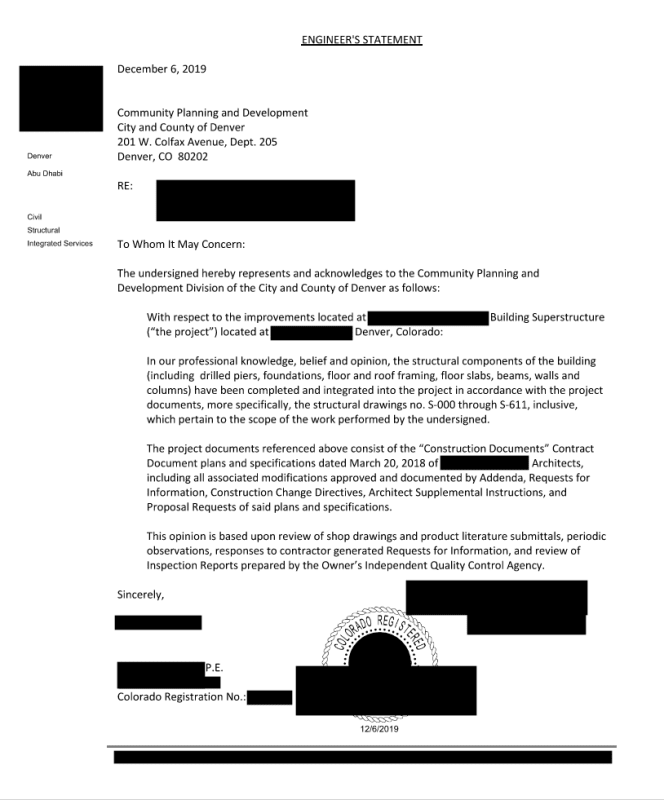
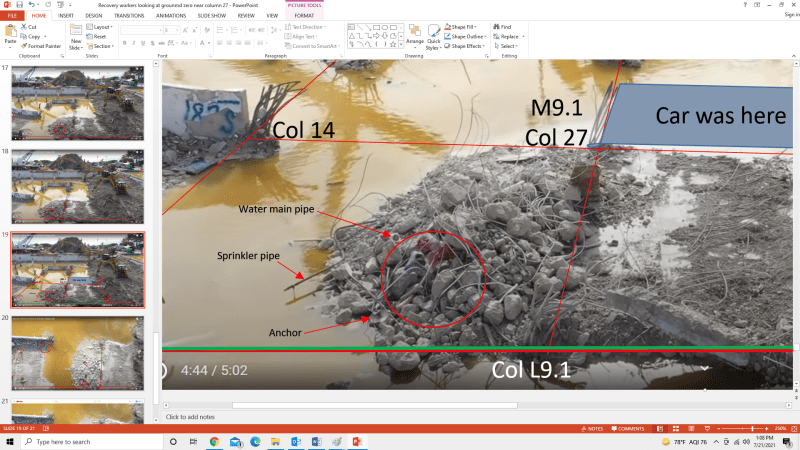
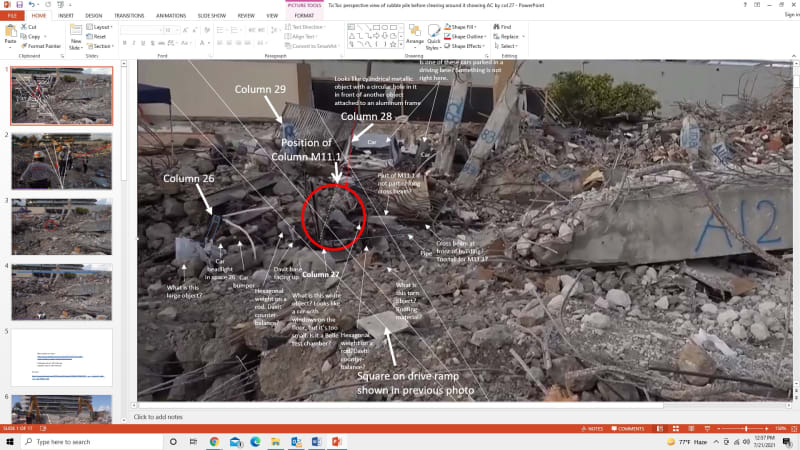
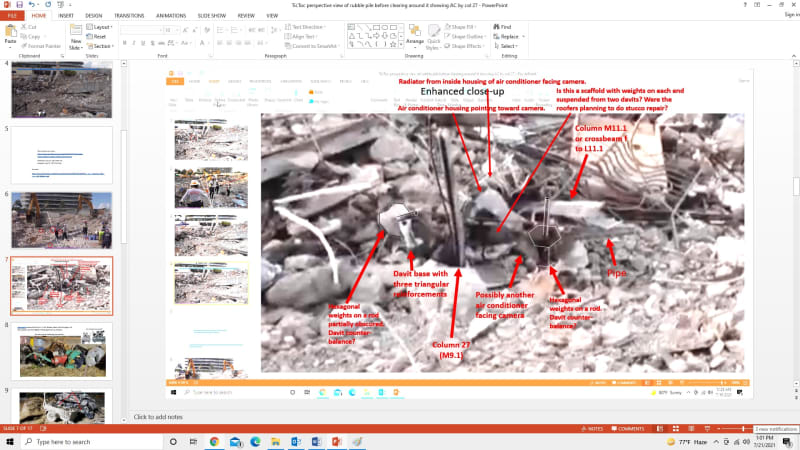
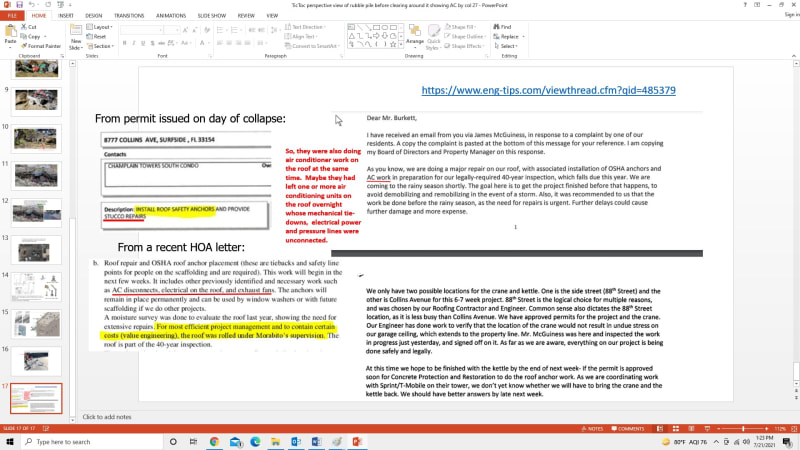
MarkBoB2 said:I thought it would be interesting to show some close-up photos of the debris pile that can be seen on a 1920x1280 pixel non-interlaced display while zooming in on frames snatched from high resolution still photos and videos taken by a drone which are then pasted into a PowerPoint document to enable using its powerful zoom capabilities.
![[banghead] [banghead] [banghead]](/data/assets/smilies/banghead.gif)
Not sure it's what the drawing intended to call for, but yes, it calls for it. The pool deck is considered a roof. I cannot find any other details on this.spsalso said:I see from pictures posted by Spartan5 back on July 5 that a typical column top poking through the pool deck seems to have been tied to the slab by 4 pieces of rebar embedded in the column, bent 90 degrees, and extending into the slab about a foot.
I haven't a clue how to read what the drawings say SHOULD be there. Is the above what the drawings call for?
spsalso
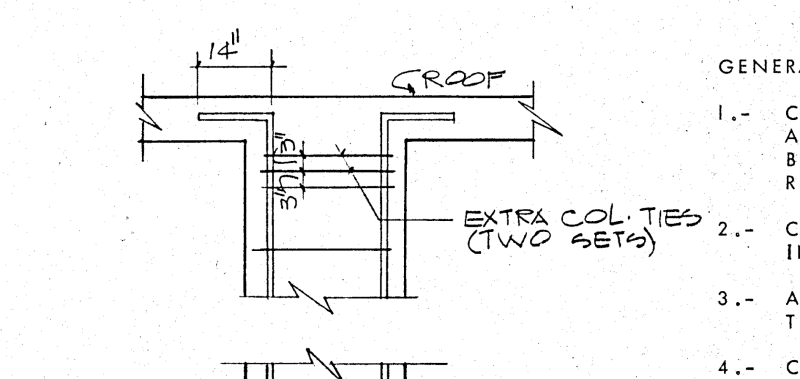
The man behind the BecauseSurfside channel would be the man to ask about that.MarkBob2 said:Also, if one is skeptical about hexagonal weights being found at the bottom of the debris pile, consider that the permit mentioned that stucco repair was to be done at the same time. Such repair would have required going over the side of the building with a scaffold held by davits. The davits would have required weights to stabilize the scaffold holding at least one man with repair materials, which would have required somewhere between 500 and 1000 kilograms, or over half a ton. These weights could not have been brought up to the roof by using a davit because they would have required getting the weights close to the base of the building over the deck, which was not built for this load. So the weights would have to be brought up by a crane, which had left the building at the end of the work day. Therefore, could the weights have been stored on the roof overnight and in a location close to the edge of the roof where they could have caused a roof collapse? This needs to be further understood.
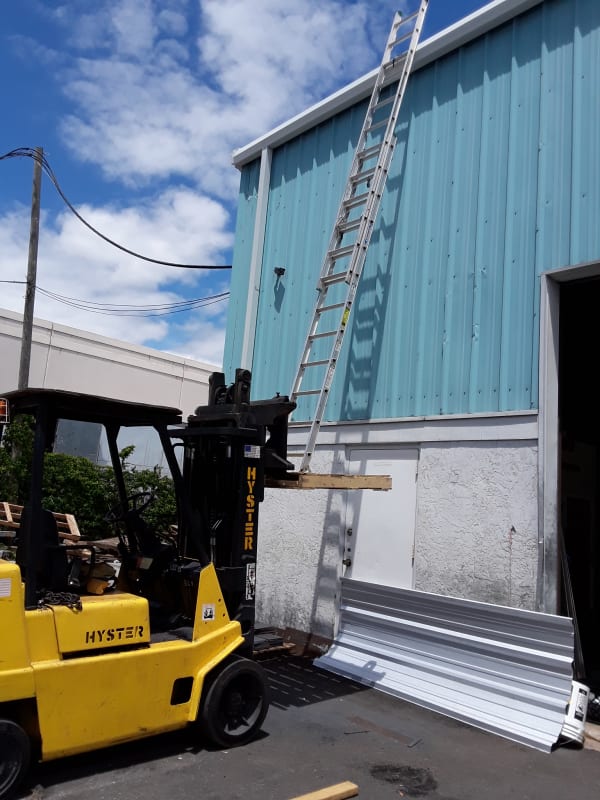
spsalso said:It sounds like things MAY have changed since the Coral Gables garage and Champlain South were done.
It seems back then that the PE was the person responsible for field inspection. Now there's different people, and the PE is NOT responsible for field inspection.
It's my belief that the general contractor is the main person responsible for the building. But, especially back in 1980, who did the architect and the PE owe responsibility to? I would expect firstly the owner of the building, and secondly the local government (or perhaps the "licensing entity"), and THEN the general contractor.
I could, of course, be mistaken.
With Champlain South, I think the owner and the general contractor were the same person. So if the contractor wishes to do things a little differently, the owner will not object. So THAT'S all covered.
With Coral Gables, the owner was the local government.
So the question may arise, who WAS the person, if any, that was monitoring the pour of the deck slab at Champlain South? Who WAS the person who was making sure the rebar was done right at Champlain South?
spsalso
